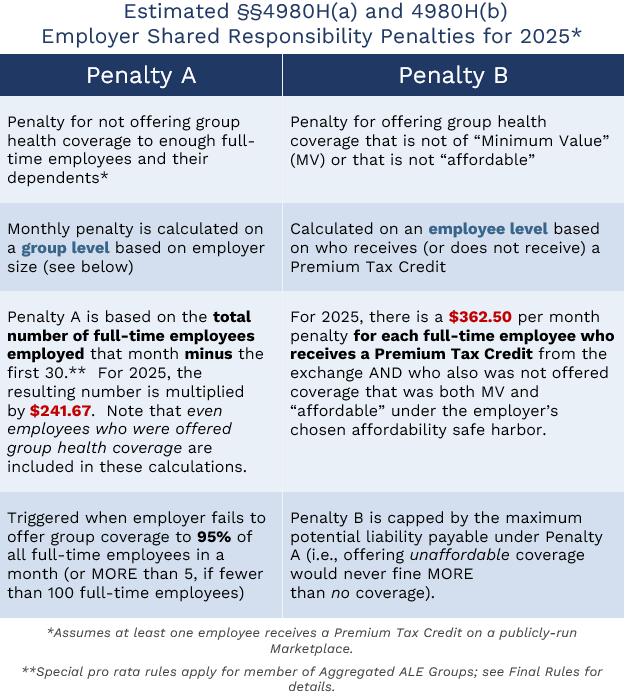
2025 ACA Employer Mandate Decreases Announced
With the issuance of Rev. Proc. 2024-14, the Internal Revenue Service (IRS) announced the updated employer mandate penalties for the 2025 calendar year under the Affordable Care Act (ACA). The penalty amounts are adjusted annually for inflation and are relevant to applicable large employers (ALEs) with 50 or more full-time employees.
ALEs are subject to the employer shared responsibility penalty under §4980H(a) if they do not offer minimum essential coverage to at least 95% of their full-time employees and their dependent(s). This is known as the “sledgehammer” penalty. If an employer offers coverage to the requisite number of employees but that coverage is not considered affordable or does not provide minimum value then a penalty under §4980H(b) will instead be levied. This is commonly referred to as the “tack hammer” penalty.
Calculated on a monthly basis, the employer mandate penalties are the annual amounts divided by 12. For 2025, the §4980H(a) sledgehammer penalty will be $2,900 (or $241.67 per month) and the §4980H(b) tack hammer penalty will be $4,350 (or $362.50 per month). These amounts represent a $70 and $110 decrease from 2024, respectively. The penalties are triggered if a full-time employee receives a premium tax credit by purchasing coverage through the Exchange.
Note: The (a) penalty is triggered when an employer fails to offer group coverage to 95% of all full-time employees in a month (or more than 5 months, if the employer has fewer than 100 full-time employees), thus providing a bit of relief to smaller employers.

Regarding the calculation of affordability, the IRS has yet to announce the 2025 threshold amount. We will provide an update once the 2025 amounts become available. In the meantime, please note our 2024 affordability article below, which includes detailed information on the affordability calculation methodology, along with a link to the IRS FAQs.
Additional Links:
- What Does the 2024 ACA Affordability Decrease to 8.39% Mean to You? How Will It Affect Your Health Plans?
- Calculation of the Employer Shared Responsibility Payment
Featured News & Insights

For many HR teams and brokers, open enrollment can feel like the finish line. Months of planning, communication, and technology setup finally come together in a few fast-moving weeks. When the last...

AssuredPartners has long been committed to providing you and your teams with highly valuable content packed with deep industry expertise and innovative risk management solutions. As a valued member...

Employers of all sizes across all industries are being challenged to tailor their benefits strategies to meet the expectations of today’s workforce. Human resources and finance teams have been...